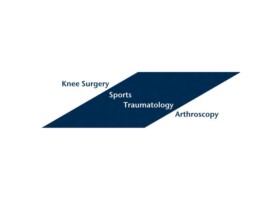
Authors:
Frank Martetschläger, Max P Michalski, Kyle S Jansson, Coen A Wijdicks, Peter J Millett
Abstract:
Arthroscopic anterior shoulder stabilization using suture anchors has become a well established and highly accepted procedure, showing good and reliable clinical results. Several stabilization techniques have been reported with the capsulolabral glenoid bone anchor repair being the most popular. For this technique numerous different anchors, loaded with different kinds of sutures are available. In 2001, Thal reported a new knotless suture anchor for arthroscopic repair of the glenoid labrum (Bankart repair). Since then, this technique is widely used and has shown comparable biomechanical and clinical outcomes to normal suture anchor repairs. Typically, two to four anchors are placed into the glenoid rim for anteroinferior or posteroinferior stabilizations. However, there is limited evidence in the literature regarding the amount of anchors required for anteroinferior or posteroinferior repairs. A recent study reported two double-loaded suture anchors to be superior to three single-loaded suture anchors but did not compare double-loaded suture anchor strength versus the number of double-loaded anchors. A long-term follow-up study by van der Linde suggests that using three or more anchors might result in lower recurrence rates when compared to two anchors.
In addition to anchor pullout failure, tearing of the suture through the soft tissue is a well-recognized mode of failure. Increasing attention is being paid to modern suture materials such as new tape-like suture materials which are already in use for rotator cuff repair. A biomechanical study on bovine cadavers documented similar biomechanical properties for tape repairs compared to normal suture repairs in a setting of rotator cuff testing. The use of a suture-tape material has not been evaluated for Bankart repairs yet. Further, the biomechanical properties of the native capsulolabral complex must be defined in order to better understand how well current repair techniques are restoring stability at time zero.
The study aims were to clarify whether the use of suture-tape is advantageous for Bankart repairs compared to normal suture repairs, and whether the amount of anchors placed within the anteroinferior or posteroinferior quadrant is an important factor for stability of the repair. Additionally, the strength of the native capsulolabral complex was investigated, and the failure modes of the intact group were compared to the repair groups.
The following hypotheses were tested for glenoid labrum repairs: (1) anchors loaded with the new suture-tape mate- rial will provide higher biomechanical stability compared to anchors loaded with normal sutures, (2) four anchors will provide higher stability compared to three anchors, and (3) the stability of the native capsulolabral complex will be higher when compared to the reconstructions.
For the complete study: Biomechanical Evaluation of Knotless Anterior and Posterior Bankart Repairs
